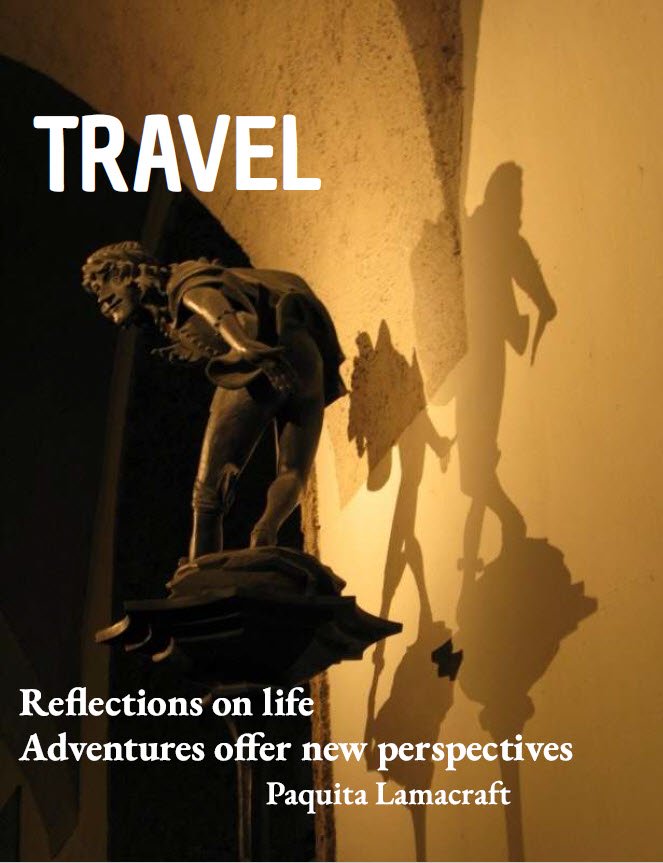Paris Tuileries Gardens
Built in 1564, in 1796 the Tuileries Palace in Paris suffered at the hands of raging crowds, and again in 1871 when it was sacked and burned.
All that now remains are the gracious Italianate Tuileries Gradens that connect the Louvre and the Carrousel Arch.
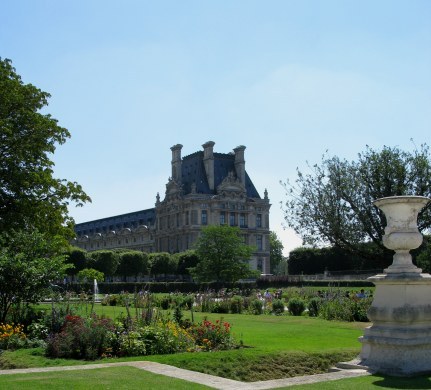
Designed for Catherine de Medici who married Henry II, the Tuileries Gardens were created in the late 1500s to replicate the grandeur and beauty of such gardens in her home in Florence.
The site was formerly a clay pit with tile making workshops – or 'Tuileries'.
The gardens fell into disrepair with the flight of Henry III from Paris, then were redesigned and restored by Henry IV – but it would not be until Louis XIV appointed André Le Nôtre, grandson of the original designer, that the gardens would be laid out in the French style perfected at Versailles.
More recent garden works have restored much of the original design and plantings.
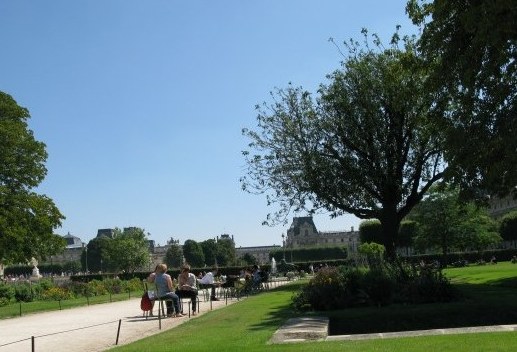
Trees within the 26 hectares (64acres) of the Tuileries and Carrousel Gardens are trimmed to maintain a maximum height of 2.2 metres (about 7'), enabling the surrounding perspectives to be uninterrupted.
More than 800 of the 2,860 trees in the gardens have been replanted – most as mature specimens.
The varieties represent the many eras of garden design which have marked the changing grandeur of the Tuileries Gardens over the centuries.
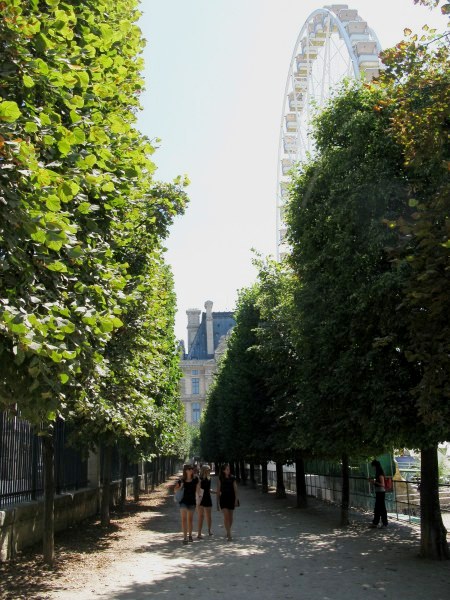
It is taxing work to maintain one of the world’s favourite inner-city gardens, and the head gardener must also each year plan the floral displays with precision.
Over 70,000 bulbs and plants must be carefully arranged according to colour, layering and blooming periods so that the whole effect is beautiful during the flowering months of May to October.
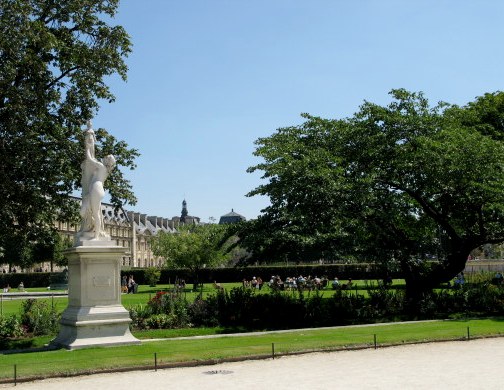
The Tuileries Gardens are worth visiting no matter what the season, and with a Metro stop of the same name it is easily reached.
In summer it draws visitors and locals en masse to stroll, as did our forefathers along the geometrically laid out paths…
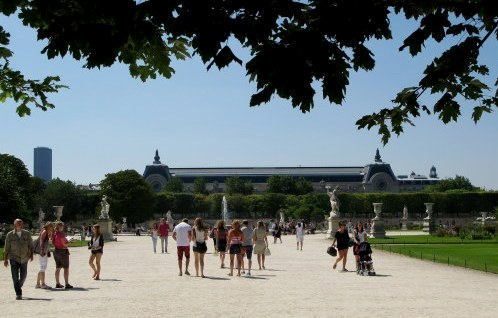
…or to sit on one of the many free green metal chairs and soak up the sun, talk with friends, read, pose in front of them…
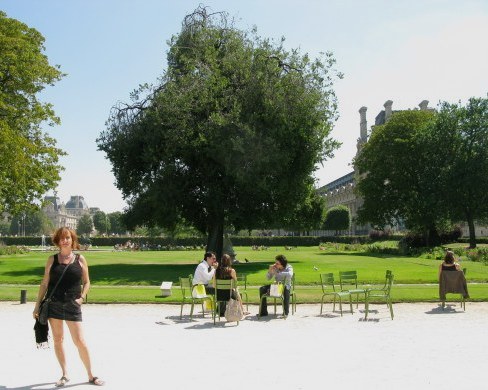
… do nothing but be there…and just admire the statuary.
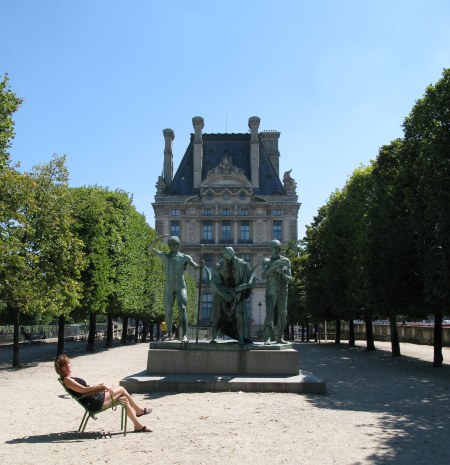
Big Wheels - their origins and foundations
Now that 'le Grande Roue' or Big Wheel of Paris has returned from its extensive international tour, the 42 gondolas rise 200 metres (60ft) above the Tuileries Gardens.
The whole magnificent structure, instead of havingany permanent or semi-permanent traditional type of foundation, instead sits on a ballast of 40,000 litres (8,800 imp gal; 11,000 US gal) of water.
The well known Paris Big Wheel's previous location was as a millennium focal point on the Place de Concorde.
All such structures derive from the ambitious design of a 32 year old George Ferris who created the first great wheel for the Chicago World’s Fair.
After just 4 months from approval to build, the Wheel was in operation.
The first brave passengers rode 80.5 metres (264 ft) aloft on 1 May 1893.
The Chicago Ferris Wheel ran without any problems until November of the same year: not bad for what was essentially a prototype.
When he first proposed the idea, it met with disbelief and Ferris was thought to be unhinged to even conceive such a project, but what creativity and foresight – and what a legacy!
In the words of Jonathan Swift:
Vision is the art of seeing the invisible.
As was often the way of the inventors of the Victorian era, George Ferris matched his engineering creativity with financial ingenuity.
By November of the first year of operation he managed to secure a
profit of $395,000 (in slightly less than
6 months) from the takings for almost 1.5million riders: achieved through his clever contractual
arrangements.
It was a princely
sum for the era.
Le Grand Roule : an engineering wonder and a housing project all in one
The current version of the Grande Roue de Paris follows that built for the 1900 Paris Exposition. The earlier version was 100-metre (328 ft) high and its cars were sufficiently large as to be removed for use as family housing at the end of WW I.
This original Grande Roue de Paris and the American Ferris Wheel were engineering feats that would not be equaled or surpassed for 90 years.
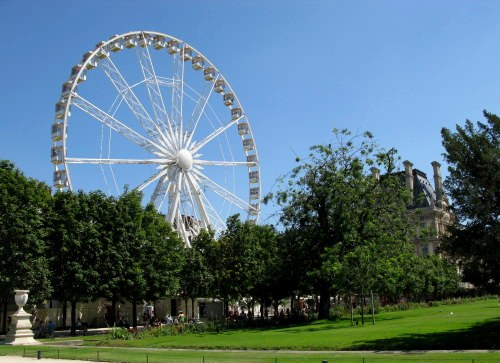
In between its residence at both Paris locations, the Grande Roue went 'on tour', being briefly re-named as the 'Wheel of Birmingham' and then the 'Wheel of Manchester' during residence in each city in 2003-2004.
In 2005 le Grande Roue was a feature in the Netherlands and then took up a sparkling but brief residence in Gateshead, England, to celebrate the Tall Ships Race.
Further afield in 2006-2007 the Wheel was in Bangkok and then returned to Europe with a short stay in Antwerp – and it seems also in Antibes.
All this can be accomplished relatively easily because the modern Grande Roue was designed by the specialist maker of giant ferris wheels for easy and rapid dismantling and remounting. It comes down in 60 hours and can be erected in 72 – but does require a specialist team to do so.
In residence in the Tuileries Gardens in 2012, the Grand Roue seemed like a sort of modern sculpture complementing architecture of the Louvre Palace and the more traditional sculpture throughout the gardens themselves.
The design has spawned many imitators, 'The London Eye' being the tallest in Europe, 'The Star of Nanchang' in Jiangxi Province, China,'The Singapore Flyer', The Las Vegas 'High Roller' and the 'Ain' Dubai.
The designers of the London Eye like to point out that unlike the others , it is supported on only one side by an A-Frame, with it being effectively cantilevered rather than turning within the traditional two A-frames.
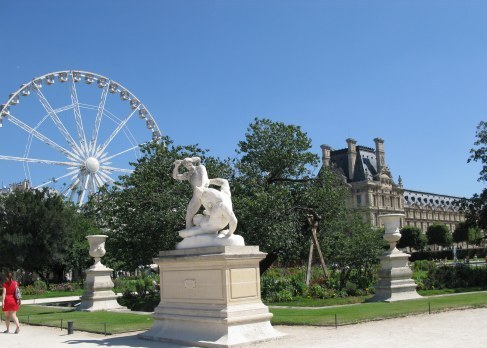
It seems to have something of a tradition amongst French leaders to leave their mark with some modification of the Tuileries Gardens: for President François Mitterrand it was landscape architecture, and for President Chirac a wealth of new statues from modern artists.
Of the more traditional 19th century sculptures, that of the Good Samaritan on one side…
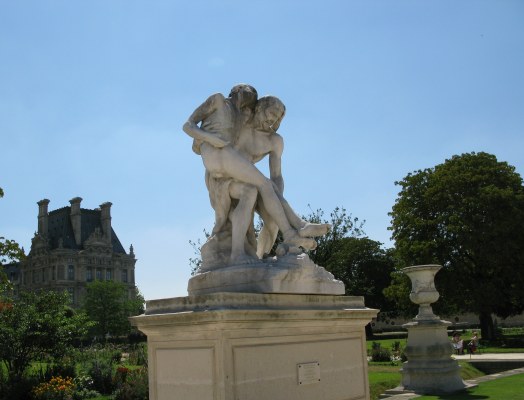
..and the rather sensual Le Centaur Nessus enlevant Déjanire - with the Centaur Nessus carrying off Déjanire on the other side, seemed to my wry thinking, to create a nice moral balance.
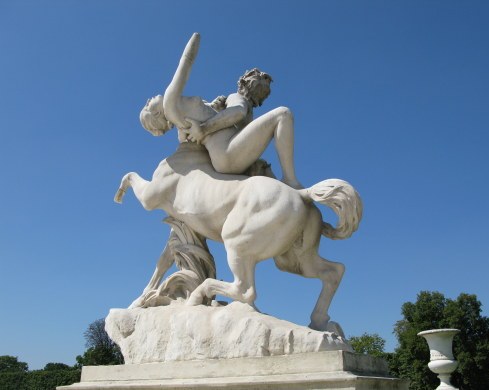
The Grand Bassin Octagonal, with its central fountain is a favourite meeting point as it’s the perfect central location to watch the world go by as you wait.
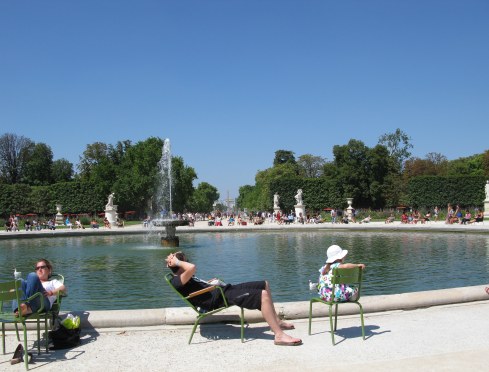
With the Louvre Palace at one end…
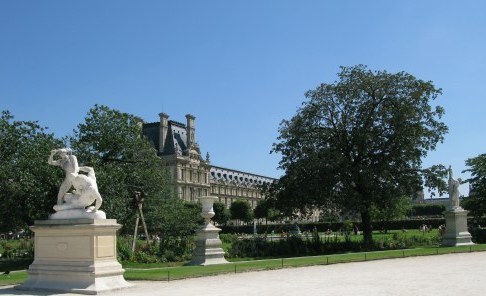
..and the triumphal Carrousel Arch at the other,the Tuileries Gardens are part fun-fare, part open-air art gallery (with the galleries of l’Orangeire & Jeau de Palme also within the grounds).
They are a lovely and refreshing place to sit, stroll, or hold impromptu musical events.
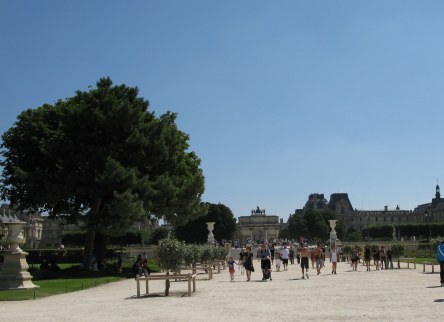
A pathway through the Paris Tuileries gardens is also a lovely route to the Musée d’Orsay on the opposite side of the Seine.
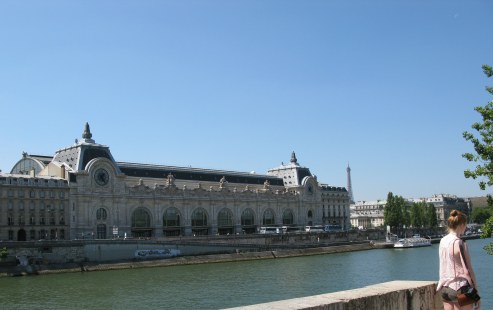
Today’s Tuileries Gardens are not as crowded as when Édouard Manet painted 'Music in the Tuileries', but are still a delightful part of Paris to explore.
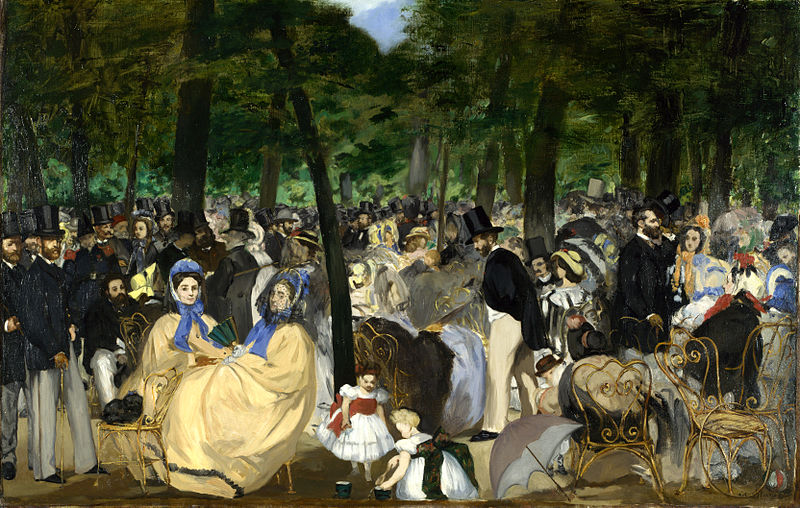
Photo courtesy of Wikimedia - Édouard Manet [Public domain]
A Tuileries Gardens horse race
with a predictable outcome
In 2012, the fun fair in the Tuileries Gardens operated from June 23rd to Aug 19th around a classic remnant of the era of Manet’s painting, the Carrousel 1900.
There is still a carousel, but it is not this one and I ahve not been able to find out its current fate.
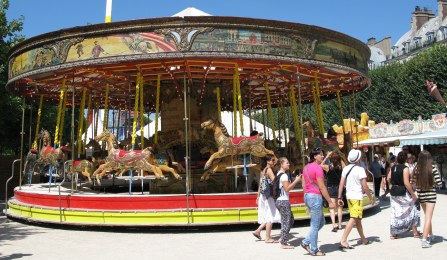
The Carrousel des Epicuriens has much loved horses, mostly still with tails, and each is named.
Here are Pascal and Henry flanking another whose name is not so clear.
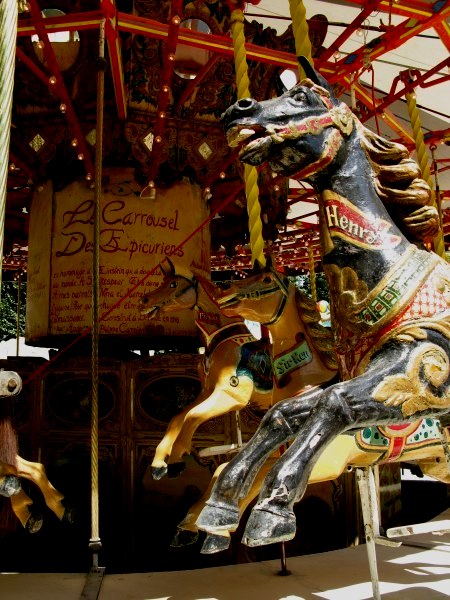
Philippe canters just ahead of Romano, with the Louvre in the background.
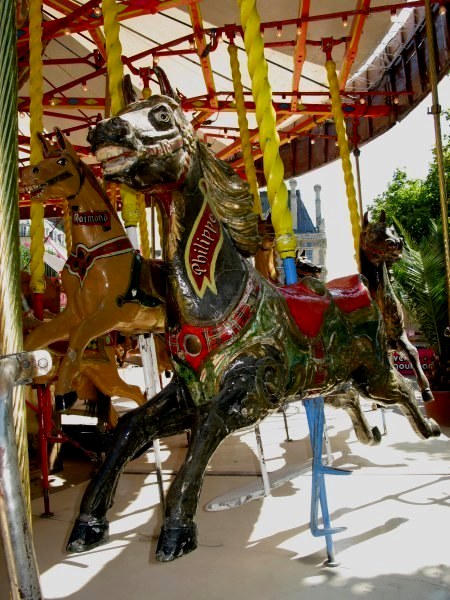
… followed by Yentl.
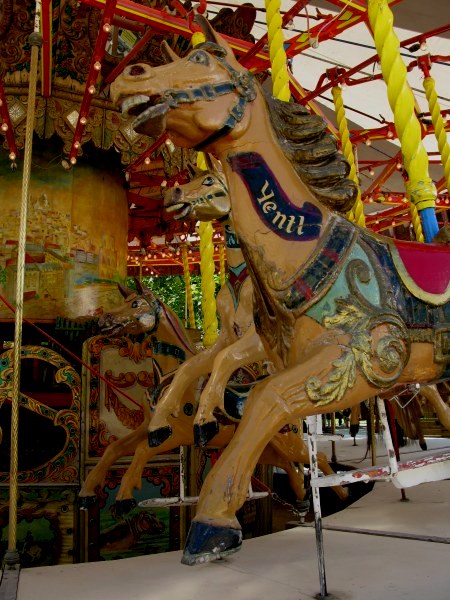
This lovely vestige of an era passed was created in one of the several Carnival Arts Ateliers of Paris.
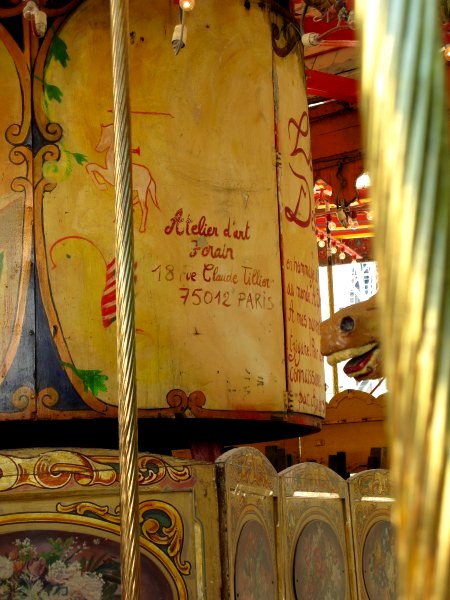
To experience this evocative era of art you can visit the Museum of Carnival Art in the Pavilions of Bercy.
Here is the link :
http://www.arts-forains.com/index.php?pages=photos
The Tuileries Gardens featured often in the works of Impressionist painting and has marked much history.
Here, great art is exhibited – both outside and inside.
Here, great events and great dreams have caused the redesign of this wonderful asset of Paris.
For me, the Tuileries Gardens are a place that is ever fresh, ever-welcoming, and a place where one can let one’s dreams float effortlessly to the most creative parts of the mind. Thousands of other people also apparently find them a place of solace, of delight, and of pleasure.
Perhaps we are all in our own way following the lead of the gifted musician Arthur Rubenstein in enjoying our simple pleasures, for as he said:
To be alive,
to be able to see,
to walk,
to have houses, music, paintings
- it's all a miracle.
I have adopted the technique
of living life miracle to miracle.
Immersed in the timeless beauty of the Tuileries Gardens in Paris, with the beautiful Musée D’Orsay just across the Seine and flanked by the Louvre and the Carrousel Arch, you can’t help thinking it is some sort of miracle to be there: indeed, the stuff of dreams.
For more Paris pages:
